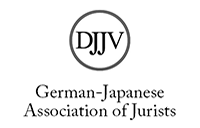Accountability of Administration in Japan after the Mid-1990s
Abstract
The concept of “accountability” (akauntabiritî) was introduced into Japanese public discussion in the middle of the 1990s and was translated as “duty to explain” (setsumei sekinin) in Japan. The concept was first introduced in the purpose clause of the Administrative Information Disclosure Act (1999) and was followed by three other laws (Incorporated Administrative Agencies, etc. Information Disclosure Act (2001); Government Policy Evaluations Act (2001); and Public Record Management Act (2009)). In this article, these laws and the Public Comment Procedure (1999 Cabinet Decision and 2005 amendment of Administrative Procedure Act) are referred to as “accountabilityrelated legal schemes (ARLS)” and their features are examined. The ARLS need to be put into the context of the governance movement toward “structural reform” that began in the mid-1990s.
This article compares and analyzes how “accountability” or “duty to explain” is to be attained in each ARLS under the following perspectives: (a) How and what do the administrative organs have to “explain”? (b) Who are the administrative organs accountable to? and (c) Does accountability focus on the outcome or the process?
The ARLS can be seen as a set of rules that are imposed upon an administrative organ as one of the actors participating in a democratic process. Such rules regulate how the administrative organ produces information and crystallizes and stores them in documents as a medium. They also regulate when the organ has to provide such information stocks to other actors. Each legal scheme should be examined from the perspectives of what kind of communication arena it will open up and how it would contribute to control administrative activities.






